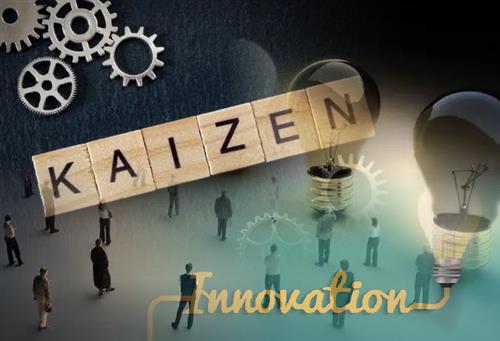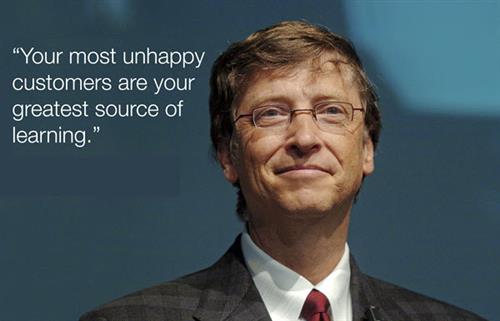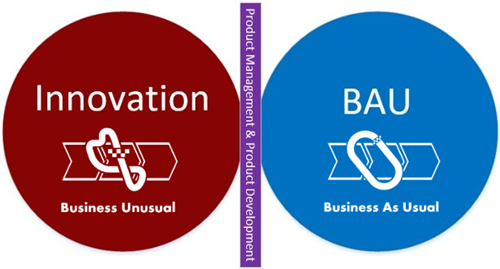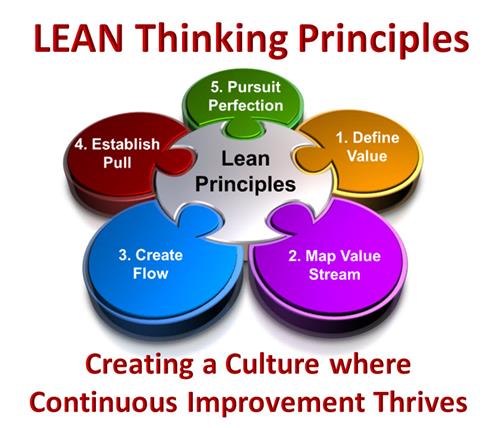
14 Common Reasons Software Projects Fail (And How To Avoid Them)
Last updated: October 12, 2022 Read in fullscreen view
- 01 Aug 2024
 The Standish Group report 83.9% of IT projects partially or completely fail 150/1772
The Standish Group report 83.9% of IT projects partially or completely fail 150/1772 - 13 Apr 2024
 Lessons on Teamwork and Leadership from Chinese story book "Journey to the West" 41/949
Lessons on Teamwork and Leadership from Chinese story book "Journey to the West" 41/949 - 02 Nov 2021
 What is Terms of Reference (ToR)? 23/1466
What is Terms of Reference (ToR)? 23/1466 - 03 Apr 2022
 Microsoft Solutions Framework (MSF) 12/1157
Microsoft Solutions Framework (MSF) 12/1157 - 18 Dec 2023
 The Cone of Uncertainty in Scrum & Requirement Definition 8/643
The Cone of Uncertainty in Scrum & Requirement Definition 8/643 - 18 Oct 2021
 Key Elements to Ramping Up a Large Team 7/1108
Key Elements to Ramping Up a Large Team 7/1108 - 13 Oct 2021
 Outsourcing Software Development: MVP, Proof of Concept (POC) and Prototyping. Which is better? 6/424
Outsourcing Software Development: MVP, Proof of Concept (POC) and Prototyping. Which is better? 6/424 - 20 Jan 2022
 TIGO Self-Organization Practice: Change Management Workflow 6/430
TIGO Self-Organization Practice: Change Management Workflow 6/430 - 28 Jul 2022
 POC, Prototypes, Pilots and MVP: What Are the Differences? 6/606
POC, Prototypes, Pilots and MVP: What Are the Differences? 6/606 - 16 Jun 2022
 Rapid Application Development (RAD): Pros and Cons 5/800
Rapid Application Development (RAD): Pros and Cons 5/800 - 31 Aug 2022
 What are the best practices for software contract negotiations? 5/215
What are the best practices for software contract negotiations? 5/215 - 05 Mar 2021
 How do you minimize risks when you outsource software development? 5/317
How do you minimize risks when you outsource software development? 5/317 - 07 Oct 2025
 Case Study: Using the “Messaging House” Framework to Build a Digital Transformation Roadmap 5/45
Case Study: Using the “Messaging House” Framework to Build a Digital Transformation Roadmap 5/45 - 01 Jan 2024
 The pros and cons of the Centralized Enterprise Automation Operating model 4/165
The pros and cons of the Centralized Enterprise Automation Operating model 4/165 - 20 Jul 2022
 Software Myths and Realities 4/797
Software Myths and Realities 4/797 - 12 Dec 2021
 Zero Sum Games Agile vs. Waterfall Project Management Methods 4/374
Zero Sum Games Agile vs. Waterfall Project Management Methods 4/374 - 04 Oct 2022
 Which ERP implementation strategy is right for your business? 4/278
Which ERP implementation strategy is right for your business? 4/278 - 07 Jul 2022
 Managing Project Execution Terms 3/379
Managing Project Execution Terms 3/379 - 20 Jan 2021
 Fail early, fail often, fail cheap, fail safe but always fail forward 3/688
Fail early, fail often, fail cheap, fail safe but always fail forward 3/688 - 18 Jul 2021
 How To Ramp Up An Offshore Software Development Team Quickly 3/516
How To Ramp Up An Offshore Software Development Team Quickly 3/516 - 01 Dec 2023
 Laws of Project Management 3/249
Laws of Project Management 3/249 - 05 Sep 2023
 The Cold Start Problem: How to Start and Scale Network Effects 3/167
The Cold Start Problem: How to Start and Scale Network Effects 3/167 - 10 Apr 2024
 The Parking Lot Method: Unlocking a Simple Secret to Supercharge Your Productivity 3/403
The Parking Lot Method: Unlocking a Simple Secret to Supercharge Your Productivity 3/403 - 22 May 2025
 Role of Self-Service in CRM: Customer & Partner Portals for Automation 3/72
Role of Self-Service in CRM: Customer & Partner Portals for Automation 3/72 - 01 May 2024
 Warren Buffett’s Golden Rule for Digital Transformation: Avoiding Tech Overload 2/188
Warren Buffett’s Golden Rule for Digital Transformation: Avoiding Tech Overload 2/188 - 26 Sep 2024
 Successful Project Management Techniques You Need to Look Out For 2/368
Successful Project Management Techniques You Need to Look Out For 2/368 - 24 Nov 2023
 The project management paradox: Achieving MORE by doing LESS 2/193
The project management paradox: Achieving MORE by doing LESS 2/193 - 02 May 2022
 What Is RAID in Project Management? (With Pros and Cons) 2/734
What Is RAID in Project Management? (With Pros and Cons) 2/734 - 05 Jun 2023
 Fractional, Part-Time (virtual) or Interim CTO: Who Will Cover Your Business Needs? 2/109
Fractional, Part-Time (virtual) or Interim CTO: Who Will Cover Your Business Needs? 2/109 - 02 Dec 2022
 Success Story: Satsuki - Sales Management Software, back office app for School Subscription Management 2/219
Success Story: Satsuki - Sales Management Software, back office app for School Subscription Management 2/219 - 04 Oct 2021
 Product Validation: The Key to Developing the Best Product Possible 2/295
Product Validation: The Key to Developing the Best Product Possible 2/295 - 11 Nov 2021
 What is an IT Self-service Portal? Why is it Important to Your Business? 2/364
What is an IT Self-service Portal? Why is it Important to Your Business? 2/364 - 02 Nov 2021
 [Case Study] Streamlined Data Reporting using Tableau 2/276
[Case Study] Streamlined Data Reporting using Tableau 2/276 - 28 Oct 2022
 Build Operate Transfer (B.O.T) Model in Software Outsourcing 2/361
Build Operate Transfer (B.O.T) Model in Software Outsourcing 2/361 - 14 Jun 2022
 Example and Excel template of a RACI chart in Software Development 2/707
Example and Excel template of a RACI chart in Software Development 2/707 - 12 Aug 2022
 What is End-to-end project management? 2/382
What is End-to-end project management? 2/382 - 15 May 2022
 20 Common Mistakes Made by New or Inexperienced Project Managers 2/247
20 Common Mistakes Made by New or Inexperienced Project Managers 2/247 - 22 May 2022
 What are common mistakes that new or inexperienced managers make? 1/243
What are common mistakes that new or inexperienced managers make? 1/243 - 03 Apr 2021
 How digital asset management streamlines your content workflow? 1/312
How digital asset management streamlines your content workflow? 1/312 - 13 Feb 2021
 Why is TIGOSOFT a software house for Enterprise Application Development? 1/336
Why is TIGOSOFT a software house for Enterprise Application Development? 1/336 - 27 Jan 2020
 Should a project manager push developers to work more hours due to mistakes of manager schedule setting? 1/412
Should a project manager push developers to work more hours due to mistakes of manager schedule setting? 1/412 - 01 Mar 2024
 10 Project Management Myths 1/120
10 Project Management Myths 1/120 - 12 Aug 2024
 Understanding Google Analytics in Mumbai: A Beginner's Guide 1/84
Understanding Google Analytics in Mumbai: A Beginner's Guide 1/84 - 07 Dec 2023
 12 project management myths to avoid 1/167
12 project management myths to avoid 1/167 - 30 Nov 2023
 Project Managers, Focus on Outcomes — Not Deliverables /143
Project Managers, Focus on Outcomes — Not Deliverables /143 - 06 Nov 2023
 How do you streamline requirement analysis and modeling? /184
How do you streamline requirement analysis and modeling? /184 - 02 Nov 2022
 Difference between Change Management and Project Management /216
Difference between Change Management and Project Management /216 - 01 Aug 2022
 Is planning "set it and forget it" or "set it and check it"? /264
Is planning "set it and forget it" or "set it and check it"? /264 - 23 Jun 2024
 Best Practices for Managing Project Escalations /183
Best Practices for Managing Project Escalations /183 - 21 Jun 2024
 Dead Horses and the Escalation of Commitment /123
Dead Horses and the Escalation of Commitment /123 - 06 Mar 2024
 [SemRush] What Are LSI Keywords & Why They Don‘t Matter /131
[SemRush] What Are LSI Keywords & Why They Don‘t Matter /131 - 02 Jun 2024
 Reviving Ancient Wisdom: The Spiritual Side of Project Management /204
Reviving Ancient Wisdom: The Spiritual Side of Project Management /204 - 21 Jun 2021
 6 Useful Tips To Streamline Business Processes and Workflows /515
6 Useful Tips To Streamline Business Processes and Workflows /515 - 17 Oct 2021
 Does Fast Tracking increase project cost? /348
Does Fast Tracking increase project cost? /348 - 19 Oct 2021
 Software development life cycles /628
Software development life cycles /628 - 13 Jan 2020
 Quiz: Test your understanding project cost management /568
Quiz: Test your understanding project cost management /568 - 03 Sep 2022
 The secret of software success: Simplicity is the ultimate sophistication /186
The secret of software success: Simplicity is the ultimate sophistication /186 - 02 Dec 2021
 3 Ways to Avoid Scope Creep in IT Consulting /192
3 Ways to Avoid Scope Creep in IT Consulting /192 - 06 Jun 2022
 Change Management at the Project Level /292
Change Management at the Project Level /292 - 03 Jan 2023
 Organizing your agile teams? Think about M.A.T (Mastery, Autonomy, Purpose) /333
Organizing your agile teams? Think about M.A.T (Mastery, Autonomy, Purpose) /333 - 09 May 2022
 Build one to throw away vs Second-system effect: What are differences? /297
Build one to throw away vs Second-system effect: What are differences? /297 - 10 May 2022
 Levels of Teamwork /180
Levels of Teamwork /180
Tech teams often plunge into new software projects with high hopes, making it all the more frustrating if the project gets derailed. Tech leaders need to be aware of potential project pitfalls ahead of time to avoid wasting time and budget dollars.
The experts of Forbes Technology Council have overseen many projects in their professional tenures. Below, 14 of them share common reasons software projects flounder and what tech teams can do to avoid falling into a trap.
1. Not Understanding The Needs Of The Business
One of the reasons software projects fail is the lack of understanding of the business’ needs. The business must clearly articulate the requirements in detail. There needs to be a precise mapping of features and functions to the business’ needs. Assigning a seasoned business leader to the project team is essential for success. - Wesley Crook, FP Complete
2. Inability To Reach Consensus On Priorities
There are various reasons why software development projects fail, but a common one that has a big impact is when the project sponsors and project teams are not clearly aligned on top priorities for the project. Decomposing these priorities into “must-haves,” “should-haves” and “could-haves” can provide a solid framework for the iteration and delivery of particular features. - Jahn Karsybaev, Prosource IT
3. Lack Of Clarity And Execution Strategy
The primary goal of a software project is to solve a business’ problems. It requires not only effective and efficient project management and stakeholder-expectation management but also a clear consensus by the entire group of stakeholders on the definition of the business’ problem and a robust execution strategy to deliver software that solves the business’ objectives. Failure to address any of the aspects outlined above results in a derailed project. - Kartik Agarwal, TechnoSIP Inc.
4. Not Starting With The End Customer
Sometimes software projects begin with a great idea that is implemented (on time or late) and delivered only for developers to discover that the problem they solved wasn’t actually the problem their customer needed to be solved. Doing the hard work of deeply understanding your customers, what they need and what they’re willing to pay for sets the ceiling on project performance and can help refocus a team when things derail. - Guy Yalif, Intellimize
5. Unclear Requirements
One of the most common reasons software projects fail is unclear requirements and the lack of a detailed explanation. Very often clients themselves are not sure exactly what they want to see, and as a result, the project cannot move forward. Communicating with your clients and asking them for their detailed vision of the future of the product is the key to ensuring that the project will not fail. - Daria Leshchenko, SupportYourApp Inc.
6. Expecting A ‘Silver Bullet’
Too often, enthusiasm arises from the false belief that a proverbial “silver bullet” will solve a given problem. However, proper solutions are rarely so simple—they are a blend of methodology, strategy and team support, not the result of a single action, technology or idea. Tech leaders should encourage open communication and leverage participatory group decision-making to solve challenges. - Christopher Yang, Corporate Travel Management
7. Working In A Silo
The biggest reason software projects fail is because teams embark on a journey to build something that is either not a business need or does not address the right problem. Both reasons are a result of misalignment between the business and tech. To avoid this, it’s crucial to identify the problem the business is trying to solve and then work collectively with the business and not in a silo. - Tanvir Bhangoo, Freshii inc.
8. Thinking That Scope Can Be Defined Upfront
While it is important to understand the problem and define the use cases upfront, almost no project can be considered successful if it does not adapt to changing business requirements during development. Unfortunately, some tech teams still insist on hitting the original goal, thus rendering their effort ineffective or even a failure. - Song Bac Toh, Tata Communications
9. Lack Of Coordination And Detailed Planning
Many software projects are late or fail due to a lack of good coordination and detailed planning. Teams need to implement a bottom-up planning process that identifies dependencies between deliverables and includes estimates from the engineers themselves. After the release plan is set, I run daily 15-minute stand-up meetings where issues are surfaced and new risks are identified and managed. - Dave Mariani, AtScale
10. Friction Caused By Undefined Roles
Undefined roles often create friction on project teams. Try using a DACI framework from the start to clearly define who has authority on what. For stuck projects, recalibrating on who is the Driver, Approver, Contributor and Informed within the project can act as a hard reset, inspiring renewed collaboration and autonomy. - Leore Avidar, Lob.com Inc.
11. Expecting Overcustomization Of Software
Oftentimes, we believe that software can be customized to a level that will tailor to all needs. That’s a misconception. Being realistic is important. Define the requirements regarding the software’s capability. Making change requests as you go requires adjustments, but that’s the hat that will need to be worn to avoid frustrations. - Bhavna Juneja, Infinity, a Stamford Technology Company
12. Lack Of Discipline
If we were to build a house and keep changing the blueprint, the project budget would spiral out of control and deadline after deadline would be missed. Create a vision of what project success looks like. Lock it down and execute. Every other great idea and detour can be considered for a later phase of the project. - Sam Polakoff, Nexterus, Inc.
13. Too Many Hands In The Dev Pot
Establish (and limit) who’s involved from day one, whether you’re building in-house or not. This can be difficult for larger tech companies with complex processes and communication channels. But in the app development world, such complexity is detrimental to crafting a fully realized product that matches everyone’s unique vision without falling prey to scope creep and a never-ending project timeline. - Joshua Davidson, ChopDawg.com
14. Not Enough Emphasis On Soft Skills
A clear and meaningful focus on managing the change process is often lacking or insufficient. I’ve seen many software projects in various categories and in an array of different types and sizes of organizations run into challenges because they are super-focused on the technical work but not applying enough energy toward training, coaching, team building and soft skills. - Amith Nagarajan, rasa.io
Via Forbes



































 Link copied!
Link copied!